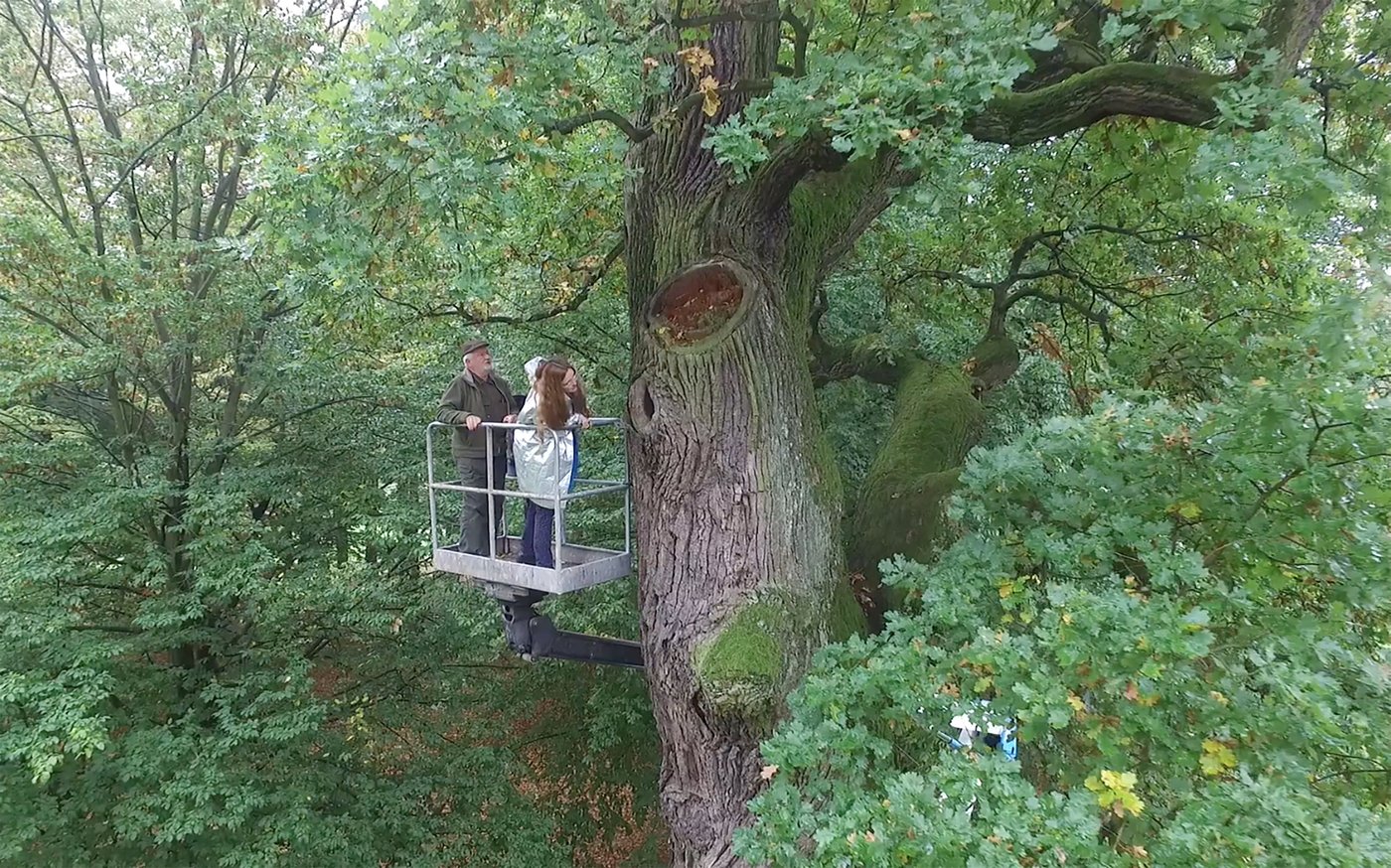Investigating Hideouts: Architecture of Survival
Vortrag von Natalia Romik im Rahmen des Symposiums Healing Feminism.
During my lecture, I will introduce my artistic research dedicated to the architectural legacy of former shtetls and the hidden architecture of hideouts that Jews built and used to survive the Holocaust. Most of these places no longer exist, yet their histories persist in memory and material traces. It is estimated that out of the 3 million Jewish citizens who lived in pre-war Poland, only 50,000 survived the Holocaust by being hidden among the non-Jewish population. They concealed themselves not only from Nazi persecutors but also from other outsiders. Most survivors had to modify existing architecture—attics, sewers, and cellars—to create hideouts, or they built new shelters within tree hollows and even empty graves. I will discuss the interdisciplinary research and artistic investigations that inform her exhibition, "Hideouts: The Architecture of Survival," commissioned by the National Gallery of Art in Warsaw and CCA Trafo in Szczecin in 2022. This exhibition is an artistic tribute to the hiding places that Jews improvised in tree hollows, wardrobes, urban sewers, caves, empty graves, and other precarious locations during the Holocaust in Poland and Ukraine. "Hideouts: The Architecture of Survival" documents and honors their creativity through a range of media, including documentary films, forensic recordings, photographs, documents, and objects recovered from hiding places.
Natalia Romik: Graduate in political science, practitioner of architecture, designer, artist. In 2018 Romik was awarded a PhD at the Bartlett School of Architecture at UCL for a thesis Post-Jewish Architecture of Memory within Former Eastern European Shtetls. She combines academic research with methods of contemporary art and architecture to explore the (post)Jewish architecture of memory. Romik has been awarded numerous grants, including the LAHP, GEOP, Gerda Henkel Stiftung. From 2007 to 2014, she cooperated with the Nizio Design studio and was a consultant for, among others, the POLIN Museum core exhibition design, co-author of the revitalization of a synagogue in Chmielnik. Romik is a member of the SENNA Architecture Collective (exhibition at the Museum of Jews in Upper Silesia in Gliwice). In 2018 she co-curated the exhibition Estranged: March ’68 and Its Aftermath and in 2024 "(post)JEWISH…Shtetl Opatów Through the Eyes of Mayer Kirshenblatt" (POLIN Museum). Author of art projects and installations, among others: “Nomadic Shtetl Archive”, “Open Anti-Fascist Studio”, The Dream-Catcher’, JAD, or X² Plagues (The Passau European Weeks Festival). Her research concluded with the exhibition Hideouts. The Architecture of Survival, presented in 2022 in Zachęta National Gallery of Art in Warsaw, Trafo CCA in Szczecin, Jewish Museum in Frankfurt. In 2022 awarded Dan David Prize.
